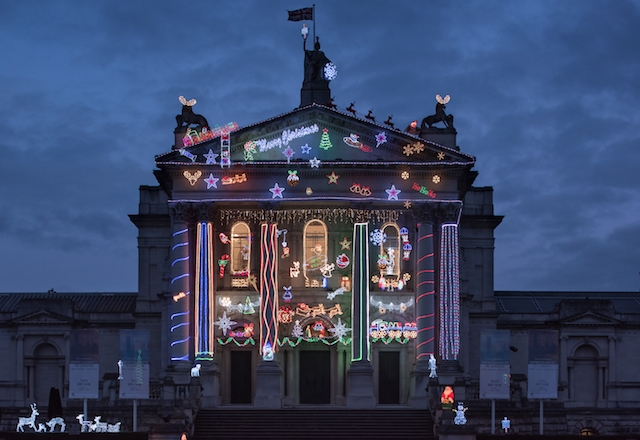J.J. Charlesworth So I guess the first big question is to ask how it has been over these first two years, and what you’ve most liked about what you’ve been able to achieve in the 24 months
Alex Farquharson Tate’s a fascinating organisation to join and, on a more personal level, it’s an interesting learning experience. A lot comes to Tate. It’s a huge draw. There are amazing people working here, very specialised in their fields. It clearly plays a very prominent role in the cultural life of the country, with an influence extending internationally. Then, of course, there’s the collection itself, which includes the finest collection of British art in the world. Most of the major 19th and 20th century British artists are best represented in our collection. So, it’s fascinating to get to know the collection better and to think – with a larger team of curators than I’ve been used to – what the possibilities are, and what a programme of exhibitions, displays and other activities could do in our situation.
Then I think that there are some interesting and exciting challenges around positioning Tate Britain over the next few years. We’re committed to seeing how we can address modern audiences’ expectations, which run on a spectrum from a more individually contemplative experience to a more social and experiential one.
Tate Britain is clearly very well setup for the former. We wouldn’t want to lose that, but if we’re to bring younger and newer audiences with us, we should find ways of further activating the visitor experience. That’s something we’re looking at across teams. I would expect Tate Britain to feel rather different in a few years’ time as a result. We’re already on that road. The ‘Late at Tate Britain’ programme is very established. They’re now curated by Tate Collective, our group of young people who work at Tate, for their peer group. The wider way we positioned Queer British Art is another indication of how that might work. In particular the one day festival, Queer and Now, which launched Pride in London, brought our spaces to life inside and out, and the audience was exceptionally diverse and young.
Of course you can’t maintain that level of energy day in and day out, but I think there’s much more we could do with the building and its exterior. We can animate it. We can recode it, if you like, through interventions by artists, like Alan Kane’s installation of lights last Christmas, and various forthcoming participatory projects in the summer. It’s a beautiful building, but it can appear conservative and imposing, and not so welcoming for those less used to using grand Victorian establishments.
So, I think there are opportunities there, both for artists and audiences, to recode and animate our space and the face we present to the world.
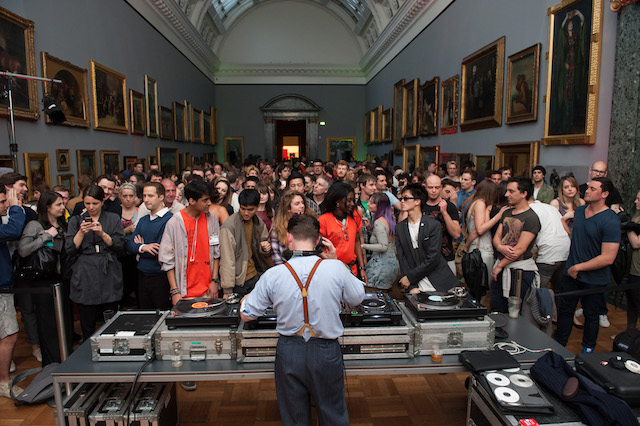
JJC Did you have an idea of how you wanted Tate Britain to be, before you arrived, and has it gone according to that outline? It sounds like you had a set of principles, or a set of emphases, which you wanted to put into practice…
AF Yes. I mean, they still feel familiar to my thinking, and relevant to what others are bringing to conversations as we plan ahead two years on. We have three thematic pillars we are working to: first, the relationship between art and society; then the relationship between Britain and the world; and lastly – given that we work on a 500 year unending axis – history and its relationship to the present. These are all interrelated terms. As soon as you start thinking about Britain and the world when looking at, for example, a nineteenth-century work, you’re straightaway dealing with social context, and usually vice versa, given that the parameters of what Tate Britain does, uniquely in the Tate family, are nationally defined.
there are opportunities both for artists and audiences, to recode and animate our space and the face we present to the world
JJC On that point, how have you thought about the distinction between Tate Britain and Tate Modern? The Tate’s collection and its brief for these two different sites was defined in a way which gives Tate Modern a great deal of room to be both international and historical. The programme you’ve announced for this year has an emphasis on the twentieth century; a show covering a century of British figurative painters centred on Francis Bacon and Lucien Freud; a show on the art after the First World War, followed by a show of the Victorian pre-Raphaelite painter Edward Burne-Jones…
AF I think you’ll find that’s not so typical, as we go forward. There is still a mixture of inherited projects and new projects in there. In two or three years’ time, you’ll see more pre-19th century exhibitions in the programme. So, in thinking about the historical spectrum we work with at Tate Britain, I wanted to revive the earlier end of the period, which is somewhat absent at present, while also reinvigorating our work with contemporary art: Art Now, for example, which we’re going to accelerate from two to three a year. That might seem like a small move, but it’s more in line with how project spaces operate across London and elsewhere, and we’re actively fundraising to achieve it. We will also be commissioning more artists to do projects outside and in time feature their work within the historic and modern displays
JJC I’d be curious to hear a little bit more about that deepening of the historical axis of Tate Britain first, before talking about how the contemporary and the modern are addressed.
AF One interesting way to look at this is to look at the complementary relationship between Tate Britain and Tate Modern. There is an overlap, as in the intersection of a Venn diagram. Tate Modern works across six continents and here we’re working across six centuries, and we’ll see that becoming more apparent in the next few years. Where it overlaps, of course, is the role of British artists in the twentieth century, and the mark that international artists have made on British art in the time they’ve spent here. I want us to work with an elastic, inclusive definition of British art and Britishness.
So, it’s absolutely right that British artists are represented in the narrative that Tate Modern offers of twentieth century art, and it would be impossible to tell a story of six centuries of British art at Tate Britain without representing the contributions of foreign-born artists, which to begin with are largely artists from Flanders and the Dutch republic. They outnumber English-born artists in the first two centuries of our collection. That’s pretty fascinating, and it takes William Hogarth in the 18th century to invent a self-consciously British tradition. One then moves through time and you see the various moments when, again, a different kind of British tradition is self-consciously constructed. Whether it’s the making of a school of history-painting around the literature of Shakespeare and Milton, as opposed to Ovid and the Bible, or later on with the pre-Raphaelite movement, drawing on Arthurian legend and medieval artisanal values, which in turn has a big international influence on Symbolist painting throughout Europe. More recently, of course, we saw this with the YBAs [Young British Artists], or earlier in the twentieth century with those artists who seized the apparently dichotomous challenge of being both modern and British, in Paul Nash’s words.
So, Tate Britain represents a national story that is in fact international and cosmopolitan, which of course reflects European trade and the impact and experience of a global empire, through to the post-colonial diaspora and its leading critical voices, and on to London’s status as a global art centre, and a society that’s global in general. So, this issue of Britishness is one that occupies multiple positions on a spectrum through successive centuries.
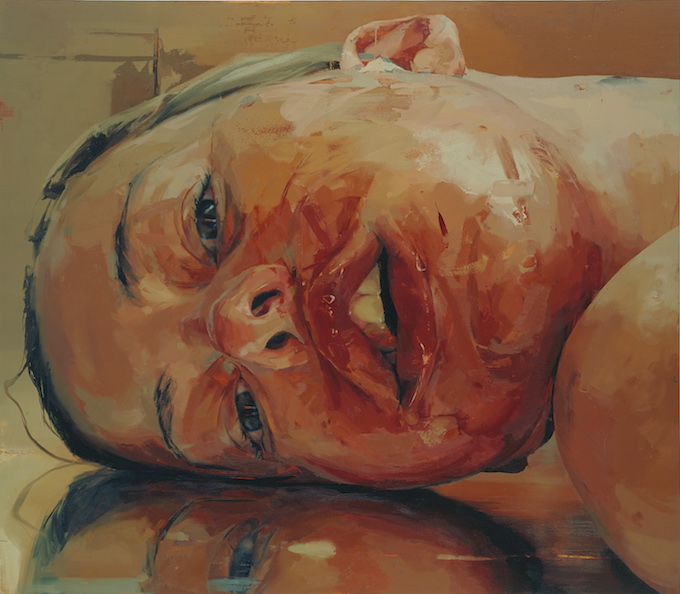
I think culture can be a great gathering point around which one can consider, in a non-conflictual way, the pressing and challenging issues of the day
JJC The Tate started out as a nation-defining institution, inasmuch as it attempted to define a ‘national’ art, at a moment when national identity was important and dynamically self-projecting. That is not the kind of institution which we are talking about now. I wonder if Tate Britain has still a function to generate a new national story, or whether that’s not possible anymore.
AF The original founding mission of Tate as a National Gallery of British art was informed by the sense of Britishness in the contemporary art of its day, which is essentially Victorian art. They were the founding collections when the Tate Gallery opened in 1897. It took Tate some time to build a collection that goes back to the Tudor age while also tracking the development of art in its day through more than a century. It was built on certainties that were then thrown into doubt and unravelled by the course of history. Particularly with decolonisation after World War II. So, is there an analogous, but different, remit to Tate Britain now in considering aspects of British experience through the art of our time? I would say the answer is yes.
This sense of a national story – set in an international context – is exemplified in some ways through the current display of our post-1960 collection. This display encompasses many artists taking different political positions and of differing identities and backgrounds, but a lot of the work on display is looking at how social and political experience is reflected in broader visual culture, including pop culture. It includes work that played a role within that wider visual culture, or subculture, as part of a social movement. So, for example, through Punk; or through Black diasporic and Queer cultures of the 80s. It includes a distinctly British figure like John Peel, painted in the style of Gainsborough, by Michael Fullerton – clearly someone that means something to the culture of our time, certainly the last 20 or 30 years, and is distinct from that all-confident imperialist national projection of the past reflected, in part, in the architecture of our building.
So, yes, I think that remains a very important role for Tate Britain, and I think a very important invitation to our audiences. To see, to understand how art can act as a lens, a prism, through which to understand broader cultural experience – now and after Brexit.
I think culture can be a great gathering point around which one can consider, in a non-conflictual way, the pressing and challenging issues of the day. I would also just finally add the caveat that I think one needs to do so open-endedly, acknowledging that – there is art that situates itself squarely in debates around identity or political narratives, and there is art that has a far less direct relationship to those issues. It would be reductive to judge art according to its efficiency in driving home messages.
JJC You mentioned earlier on that you’re upping the number of Art Now presentations. Art Now was an important strand for many years, but. In the earlier part of 2010s, the presence of young and emerging artists in the programme seemed to dwindle…
AF We reinstated Art Now a couple of years ago, after a hiatus. I think it plays a critical role in the life of the institution, the story we’re telling. It’s a test site. We don’t know what this art’s significance will be in the future. We don’t know how it will be contextualised and, for the most part, that’s unique in our programme. If we’re offering an exhibition to a contemporary artist it’s at a moment when their practice is known, mature, well-developed. We can see how it has been situated, where it’s going. But each Art Now exhibition is about taking a curatorial risk on an artist, on a practice or tendency that feels relevant now, without knowing what will happen to it in the near future.
JJC In terms of its relationship to other aspects of the programme that relate directly to contemporary British practice, particularly the Turner Prize, do you see a way in which things have evolved to expand the bracket of what contemporary activity is supposed to be, or contemporary practices can be defined as? It strikes me that with the decision to lift the age limit on the Turner Prize, you’re opening that up to a much, much wider field of practice. It definitely broadens the scope, purely because you’re dealing with the possibility of several generations. So, I’m curious about how the institution now understands the contemporary, as opposed to the modern. We certainly know that it started somewhere, perhaps, in the 70s.
AF Or the 90s. On one level I think it relates to our own histories of working with, or first becoming a viewer of contemporary art. So, obviously that starting point recedes, historically and psychologically. People make a bit of an autobiographical distinction, between a before and an after based on their own experience. I think this subliminally colours what we think of as contemporary. For me that would be the 80s.
The Turner Prize is a bit of a special case, in that the prize is focussed on art made in the present moment – art in the previous year. We’ve argued, in lifting the age limit, that the purpose of the prize is established to the point where it can confidently reflect the fact that new art, art taking new directions, can be made by artists of any generation. I think it probably took the redefinition of the Turner Prize in 1991, when the age limit and other parameters were introduced to give it a strong enough identity, for this change to be possible now.
We are seeing the reemergence of work by artists later in life in a contemporary context. We see that in the breadth of people included in major recurring exhibitions, in the interests of younger artists, critics and curators, in the editorial choices made by the most current magazines, in the increasing visibility of artists emerged in the 60s and 70s, but did not enter the canon. Unsurprisingly many of them are women or artists of colour. The field of contemporary art, both in how it’s presented and how it’s thought about, is now populated by the contributions of older artists made back in the day, as well as the exciting work they are making now. I think the two are linked: artists who were overlooked for various reasons are often making strong, relevant work now – the critical context has caught up with them and that must be hugely energising.
JJC I don’t think it’s a complete chance that the Turner Prize was redefined in the early 90s. Some of it was hype, there was nevertheless a historical reality to a turning point in a culture; I certainly think the early 90s was maybe one of those.
AF Particularly for British art…
JJC I wonder if you have any kind of sense now of something similar taking a sudden turn or whether you’ve detected any sign of it.
AF The influence and ubiquity of the digital on life – that feels like a generational marker, even though you have certain godfathers of that tendency, like Mark Leckey. I think we’re largely out of the era of movements, but if there is a broad tendency, that one’s pretty indisputable. It was epitomised by the last Berlin Biennale. Queerness, gender fluidity and the intersectionality in identity feel like generational concerns in art, as does a related continuing interest in performance and performativity.
As for Young British Artists, that movement, which rippled out to include many other tendencies, was unprecedented in this country. It changed the whole context for contemporary art here. What followed was also a huge scaling up of infrastructure, both public, nationwide, and commercial, in London. There was a great increase in the visibility and impact of contemporary art on broader culture, not least in the media. Most cities in Britain, and many of its towns, now have an ambitious centre for contemporary art. France, under Mitterand, is perhaps the only precedent for this, and it hasn’t had the same impact on public opinion. In Britain contemporary art is no longer a minority pursuit.
JJC Turning back to Tate Britain’s engagement with contemporary practice – the last Tate Triennial was in 2009. The Triennials were very interesting events, so I wonder what your thoughts are on whether that scale of survey presentation of contemporary activity is still viable? I wonder whether that way of presenting has naturally come to its end, or whether there is still something to do in terms of relatively large-scale presentations of contemporary activity at the Tate.
AF A project like that is a huge commitment, not least financially, and not one we can presently afford. I think that run of triennials achieved a lot, in terms of the position of contemporary art at Tate Britain, but in terms of our new horizons it’s not the overwhelming priority. That and the Turner Prize helped establish the importance of contemporary art to Tate Britain. There feels less of a need now.
part of the mission for Tate Britain, as with all public museums, is to lead people from the familiar to the unfamiliar
JJC As part of that is there a pressure of making sure a public attends in sufficient numbers? For example Hockney was a hugely successful exhibition, with 500,000 visitors over four months. Do you feel the pressure of having to come up with that kind of scale of audience success?
AF David’s show was fantastic and very important for us to do. It’s 28 years since his last retrospective, which is surprising given his significance and popularity. It’s an incredibly rich, diverse and challenging career to get the measure of and the response to it exceeded our very best expectations. When I opened Nottingham Contemporary it was with a show of David’s work from his earlier years, 1960 to 1968, programmed alongside Frances Stark, so you’re speaking to someone who believes his work has a lot of resonance for art today, as well as for broader culture. It was fantastic to be able to position his exhibition at Tate Britain alongside Queer British Art which also featured David’s work together with Bacon and others in the final room. Then to link that with new displays of art since 1960 which, amongst other things, had Queer motifs running through it, together with Cerith Wyn Evans’ extraordinary overhead sculpture of two kilometres of white neon. So, it really felt that the institution was charged with statement and questions posed from a Queer perspective. And that’s just to touch on one aspect of the massive resonance that David’s work has today. His room of double portraits, by contrast, spoke to that uniquely English 18th century genre, the ‘conversation piece’, and more recent work of course to the landscape tradition exemplified by Turner and Constable.
I think part of the mission for Tate Britain, as with all public museums, is to lead people from the familiar to the unfamiliar. David’s work very generously does that. One could curate a room of artists, from the 90s onwards, whose work resonates in various ways with some of the sensations and ideas that his work gives off. I see the remit of public art institutions, in general, particularly with respect to their engagement with the contemporary and recent art, to create a context that draws people in. Draws people to what they know, what they love, and then enables them to go on a journey from that to the less familiar. Sometimes the undeservedly less familiar. So, for example, we’ll be showing William Blake and Mark Leckey. Mark Leckey is very familiar to the contemporary art audience, an influential figure and Turner Prize winner. To a far wider public, who might be drawn to William Blake – of course, also a very radical figure, I would say, up to this day – that’ll be an interesting journey to go on.
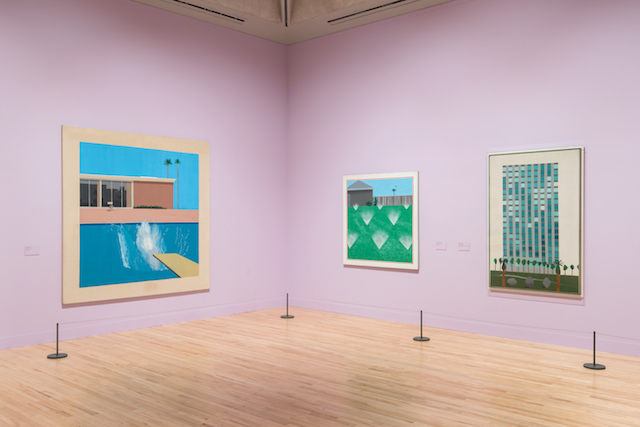
JJC With regards to Queer British Art -– that was very emphatic about taking a social theme, a perspective and developing it into a show. Was that unique to that show or is it a model for bringing the institution’s programming to contemporary debates and controversies?
AF It’s a question we’re asking ourselves. There are those moments of official, national commemoration that we participate in sometimes, where we feel it’s of interest to our audience to do so. So, Aftermath: Art in the wake of World War One, unusually, will throw French, British and German art from 1918 to 1932 together. The anniversary of decriminalisation of sex between men in 1967 was an anniversary with more edge – although mainstream cultural attitudes have changed hugely in this respect and it’s been amazing the scale on which the anniversary’s been marked in Britain. To take another example, 2018 is the 250th anniversary of the founding of the Royal Academy – hugely important for the history of British art. It’s the moment when art is first made for a gallery-going public, as opposed to for private commissions, largely seen behind closed doors. It’s the birth of the public for art, the exhibition is a competitive arena. We’re marking that with a one-room exhibition of Angelica Kauffman, one of the two founding women members of the Royal Academy.
Alongside that, we’re marking the fiftieth anniversary of May 1968 this year. Andrew Wilson is curating a one-room show around the interconnectivity of disruption in art, after minimalism, as encapsulated in When Attitudes Become Form, both in Bern and in London, and a wider countercultural context, manifested through political graphic art, from which it’s been subsequently separated, but which was the broader climate out of which that art emerged. So, we’ll be thinking in those kind of terms when presenting the collection too. In the case of Queer British Art, I think what was interesting was that a show of art from that period – the 1860s to the 1960s – would normally attract a different audience. This was an extraordinarily young audience and, maybe unsurprisingly, the audience was more than half LGBT. So, the framing, itself – the way that art was linked to a particular sexual and social issue – changed the demographics of that audience. The age of that audience was one you would expect for a contemporary art show.
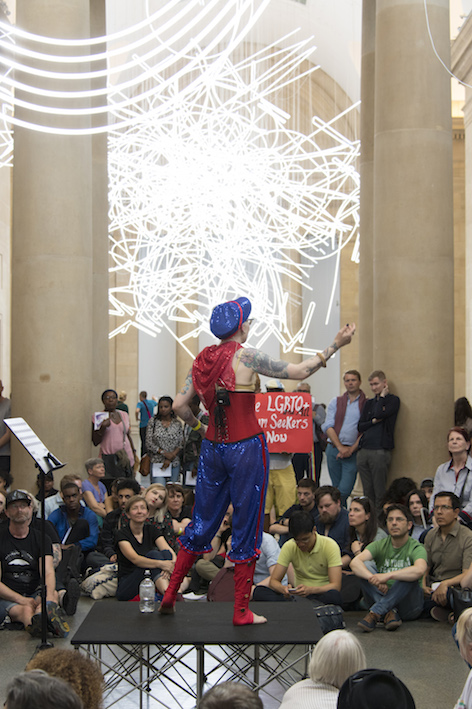
JJC That makes me wonder whether an institution can take a position or should take a position, in some way, with regards to an event as important as the EU referendum. I wonder what your thoughts are on how to develop a response to this idea of a national story; whether it’s possible to make a response at all and whether one should, as a cultural institution. I know it’s been interesting to see a few places, like the National Theatre, attempt to ‘speak back’ to the referendum…
AF They’ve done so in an inclusive way. I think a national museum should offer an invitation to everyone. I think to divorce art from the social context is to enter the realms of fiction. Then, of course, different artworks and different artists, through their work, have differing degrees of direct connection to wider world events. As we know, art can have and often has had a direct politics. One can’t deal with social context without dealing with political issues, of course, and that doesn’t mean us taking party-political stances, which it’s not our job to do. One can explore a post-Brexit environment in a way that is inclusive, that understands that this is a complex issue with layered histories, felt in different ways, regionally, generationally, socio-economically and ideologically.
We follow artists in the socio-political contexts our programmes engage with. We also follow audiences – for example, what the young people we work with might say. Tate Collective curate whole evenings, based on their own interests and how these inform how they see Tate Britain and the collection, and they curate for their peer group of 15 to 25 year olds. So this ‘inclusivity’ is about offering a context within which multiple positions can be considered. That heterogeneity, that complexity, reflects art’s own relationship to social context, which is varied by degree and varied in the position it takes.
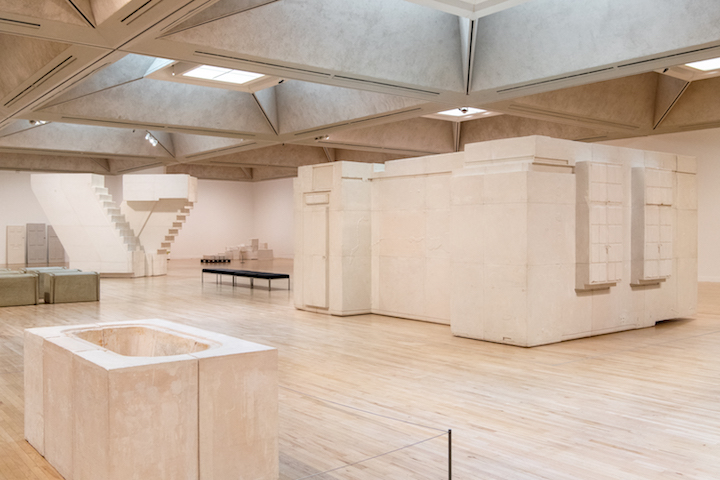
Online exclusive 14 February 2018
